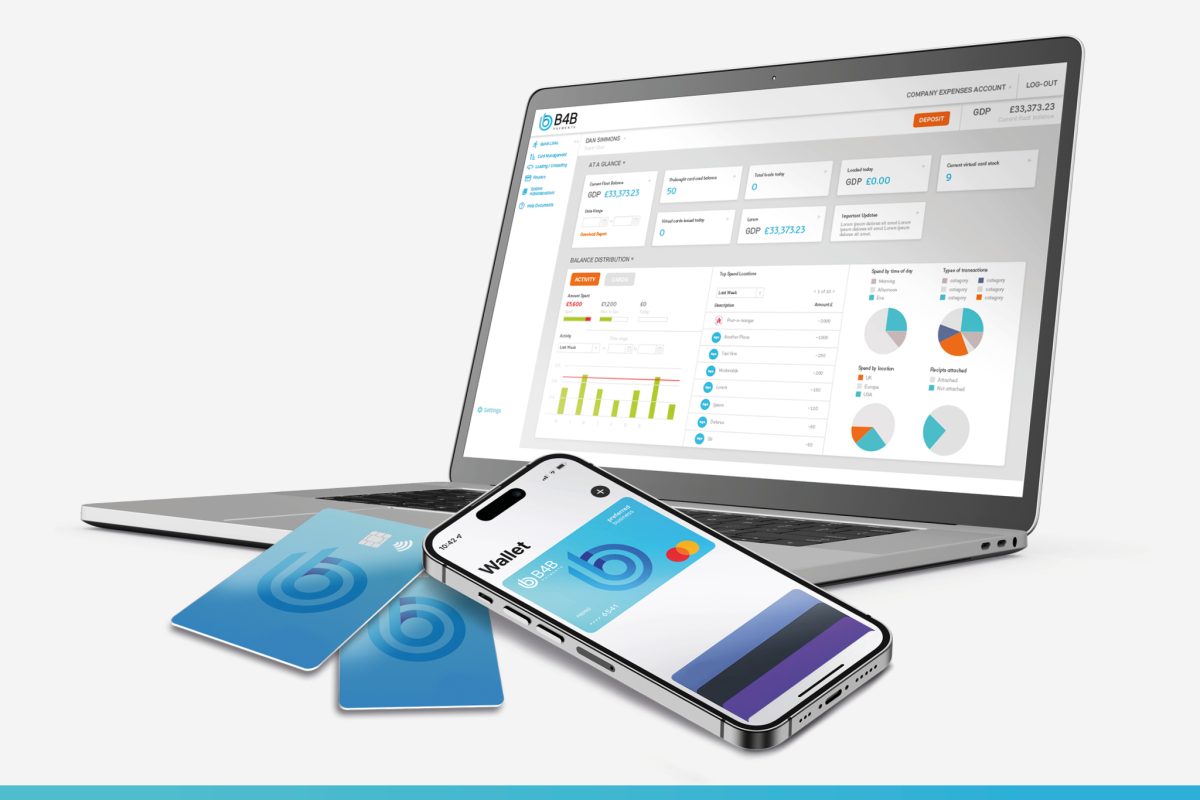How to streamline your corporate expenditure process
B4B specialises in providing card services that are tailored to help businesses achieve their corporate expenditure goals and take payments to the next level.

Keeping track of corporate expenses can be difficult for companies of all sizes, particularly those operating globally.
Tracking receipts and managing timely repayments for an extended team spread across multiple locations is a complex task. Human error and convoluted reporting systems can create much confusion and cause problems with budget monitoring.
In some cases, the expenses process might have taken a back seat during the COVID-19 pandemic. However, as the world returns to a sense of post-pandemic normality, this means business-related travel, networking events and Christmas parties are back in full swing. As a result, it’s crucial to ensure that your expense management strategy is functional and serves your employees effectively.
Weak expense processes can cause dissatisfaction among employees, set your business back, and prevent your organisation from claiming back tax deductions. Read on to discover more about key challenges in corporate expenditure, and how to streamline your expenses process.
What is corporate expenditure?
Expense management determines how employees are reimbursed for business-related spending, including travel, food, supplies, and more. Typically, employees will need to fill out an expense claim form with details of their expenditure, and then the accounts team will process this information in the finance system and provide a reimbursement.
A good expense process should be quick, fraud-proof, easy to use, trackable, and provide timely repayments. There should also be a clear, enforced expense policy so that employees know what they can expense, how to expense it, and what their daily or monthly limit is.
Key expense management challenges
Complexities of numerous stakeholders, multiple locations, and manual processes can make streamlining expense management strategies a challenge. Here are a few of the main difficulties that businesses can often run into.
Manual error processes
The world is still swimming in spreadsheets and paper receipts. Over 43% of businesses still rely on manual expense processes. Manual processes make the capturing, recording and claiming of expenses awkward and prone to mistakes.
The probability of human error when manually entering data into spreadsheets is between 18% and 40%.The high error rate means there is likely to be misalignments between the receipts received and the amounts claimed, causing difficulties for the accounts team and inaccuracies when providing reimbursements.
Slow payment
Many employees cite an arduous reimbursement process as a key problem, with 40% of expense claimants experiencing cash flow issues because of slow repayments from their employer. During the current cost-of-living crisis (when many are already struggling with cash flow problems), difficulty in claiming expenses could cause serious discontentment among employees.
An estimated 38% of all employees pay for business expenses out of their own pocket at least once a month, which is likely due to a combination of payment delays and a lack of clarity on the expenses system, or inefficiencies in the process itself.
Insufficient reporting visibility
An effective business should have complete awareness of what their employees are spending company money on and why. However, just like the ongoing use of manual processes, many businesses still rely on out-of-date tracking and monitoring systems. In fact, 26% of enterprise-sized companies have no awareness of how many expenses submitted are actually compliant with their corporate expenditure policy.
The lack of visibility means that companies aren’t able to keep track of employee spend, which could lead to expense fraud and exaggerated claims. It also means that businesses may struggle to understand how much they spend on corporate expenses. By streamlining their tracking and monitoring system, they could optimise their budget and save costs.
How to improve corporate expenses process
There are a number of ways businesses can work to improve their corporate expenditure processes. These include:
- Adopting a cloud-based expense management system to replace manual processes, reducing the the number of lost receipts and preventing delays
- Refreshing your policy to ensure it’s fair, compliant, and easy to understand
- Categorising expenses to make tracking and reporting expenses a lot easier
- Making use of mobile technology, so that receipts can be digitally uploaded instantly using an app
One way to quickly and efficiently optimise your corporate expenses program is through the use of a virtual prepaid card. Commercial card services are becoming increasingly beneficial in a cashless society, allowing customers and clients alike to make and receive payments instantly across the globe.
Card services also give companies of any size a flexible, all-in-one expense management solution that allows them to easily keep track of where money is being spent and on what. Not only do virtual cards make accounting and money management a lot easier, they also reduce the risk of theft and fraud while saving both time and money. Plus, businesses can easily access data which enables them to track spending habits and improve their financial strategy.
Enhance your expenses strategy with B4B Payments
B4B Payments provide virtual, or digital, prepaid cards which allow businesses to make a large number of online payments which are secure and within the expenses budget. Each transaction is tracked and receipt uploads are a breeze with the mobile app.
The self-managed, unified platform is quick and easy to install, and allows businesses to pay anyone overseas instantly. As a streamlined and one-stop solution, you can reload and deploy funds as you see fit to ensure that your employees are always covered for their travel and expenses. Meanwhile, the iOS and Android application lets employees track their expenditure and store photographic proof of purchase receipts at the click of a button.
Find out more about how B4B Payments could help you optimise your expense management process today, by booking a demo.



